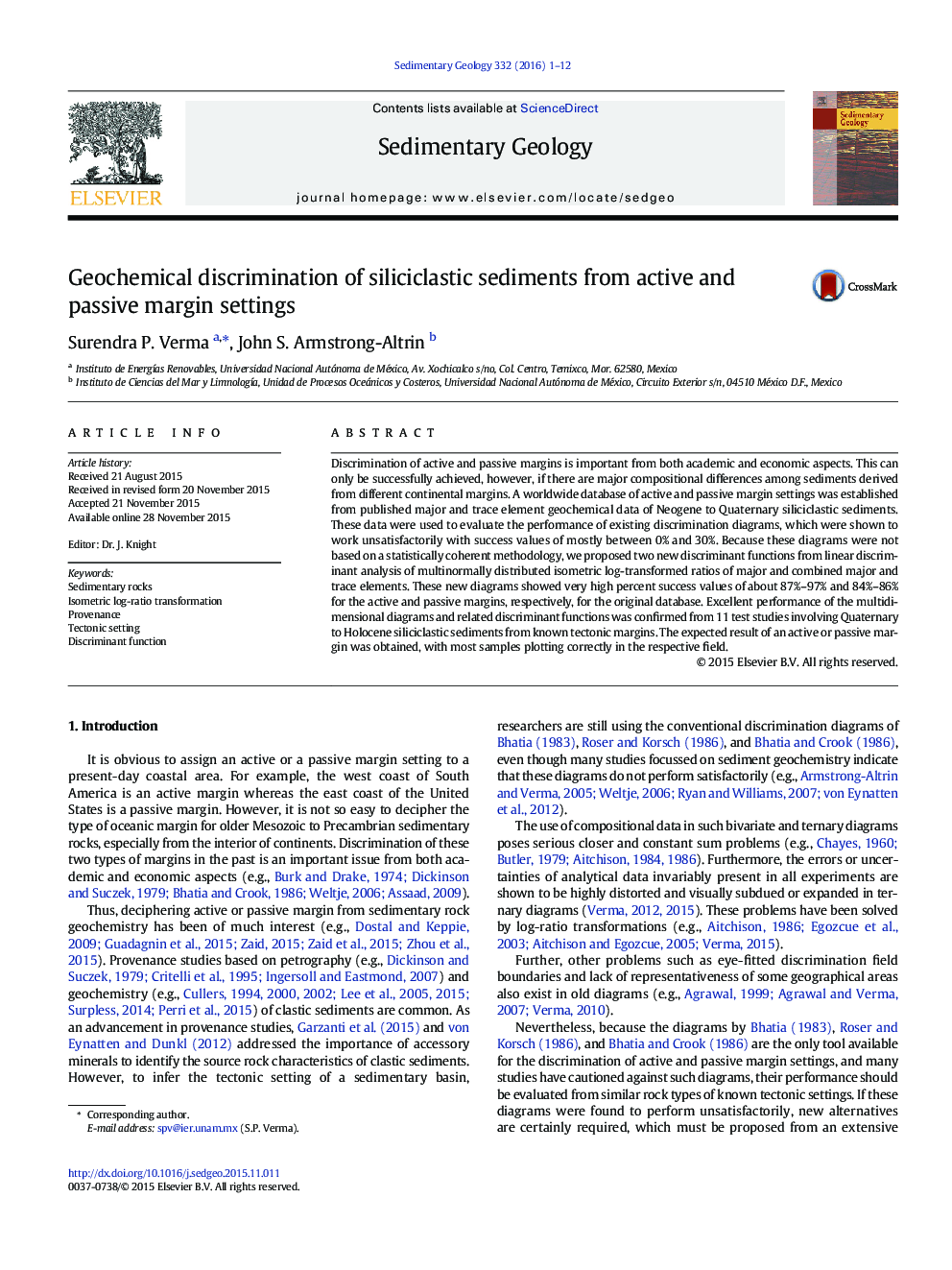| Article ID | Journal | Published Year | Pages | File Type |
|---|---|---|---|---|
| 4689063 | Sedimentary Geology | 2016 | 12 Pages |
•Existing active and passive margin discrimination is shown to be unsatisfactory.•New statistically coherent isometric log-ratio based discriminant functions are proposed.•Satisfactory testing and application cases are included to guide future applications.
Discrimination of active and passive margins is important from both academic and economic aspects. This can only be successfully achieved, however, if there are major compositional differences among sediments derived from different continental margins. A worldwide database of active and passive margin settings was established from published major and trace element geochemical data of Neogene to Quaternary siliciclastic sediments. These data were used to evaluate the performance of existing discrimination diagrams, which were shown to work unsatisfactorily with success values of mostly between 0% and 30%. Because these diagrams were not based on a statistically coherent methodology, we proposed two new discriminant functions from linear discriminant analysis of multinormally distributed isometric log-transformed ratios of major and combined major and trace elements. These new diagrams showed very high percent success values of about 87%–97% and 84%–86% for the active and passive margins, respectively, for the original database. Excellent performance of the multidimensional diagrams and related discriminant functions was confirmed from 11 test studies involving Quaternary to Holocene siliciclastic sediments from known tectonic margins. The expected result of an active or passive margin was obtained, with most samples plotting correctly in the respective field.
